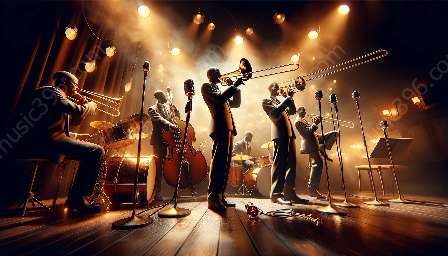When it comes to jazz performance, the blues scale is a fundamental tool for improvisation and expression. This guide delves into the various techniques for utilizing the blues scale in jazz music, exploring its applications and impact on the genre.
Understanding the Blues Scale
The blues scale is a pivotal element in both jazz and blues music. It is a six-note scale based on the major pentatonic scale with an added flatted fifth. In the key of C, the blues scale consists of the notes C, Eb, F, Gb, G, and Bb. This scale's unique structure and characteristic sound make it a versatile and essential tool for jazz improvisation.
Techniques for Utilizing the Blues Scale in Jazz Performance
1. Blues Scale Phrasing
One of the most effective techniques for improvising with the blues scale in jazz performance involves phrasing. Jazz musicians often use the blues scale to create melodic phrases and licks that convey the expressive and emotive qualities of the blues tradition. By applying specific rhythmic patterns and articulations, musicians can bring out the soulful essence of the blues scale within a jazz context.
2. Chromaticism and Blues Scale Integration
Integrating chromaticism with the blues scale can add depth and complexity to improvisation. By incorporating chromatic passing tones and neighboring tones, jazz musicians can create captivating and unpredictable melodic lines that intertwine seamlessly with the blues scale. This approach allows for a rich and dynamic exploration of tonal colors and expressive nuances in jazz performance.
3. Harmonic Extensions and Substitutions
Expanding the harmonic palette of the blues scale opens up new improvisational possibilities. Jazz performers often utilize harmonic extensions and substitutions to enhance the harmonic richness of the blues scale. By incorporating altered or extended chords, musicians can introduce tension, release, and harmonic interest to their improvisations, elevating the emotional impact of the blues scale in a jazz context.
Application of the Blues Scale in Jazz Context
The blues scale serves as a cornerstone of jazz vocabulary, appearing in countless improvisations and compositions across various jazz styles. Whether it's used in traditional blues forms, bebop-inspired jazz, or contemporary fusion, the blues scale offers a powerful means of self-expression and communication for jazz musicians.
1. Blues Scale in Traditional Jazz Blues Forms
In traditional jazz blues forms such as the 12-bar blues, the blues scale is a prevalent and foundational element of improvisation. Musicians skillfully navigate through the blues scale, infusing their solos with raw emotion, gritty phrasing, and compelling storytelling. The blues scale's authentic and earthy character resonates deeply within the traditional jazz blues context.
2. Bebop and Modern Jazz Applications
The influence of the blues scale in bebop and modern jazz is evident in the improvisatory language of renowned jazz artists. From the fiery bebop lines of Charlie Parker to the contemporary explorations of modern jazz pioneers, the blues scale remains a driving force in shaping the melodic and harmonic landscape of jazz improvisation.
3. Fusion and Cross-Genre Utilization
In the realm of jazz fusion and cross-genre experimentation, the blues scale serves as a flexible and adaptive tool. Jazz fusion artists adeptly blend the blues scale with diverse musical elements, incorporating it into complex harmonic frameworks and innovative improvisational approaches. This fusion of styles allows for the seamless integration of the blues scale into unconventional jazz contexts, pushing the boundaries of creative expression.
Impact of the Blues Scale in Jazz Music
The blues scale has left an indelible mark on the evolution of jazz music, contributing to its emotional depth, authenticity, and improvisational vitality. Across generations and styles, the blues scale continues to fuel the creative spirit of jazz performers and serve as a beacon of individual expression within the jazz tradition.
Conclusion
Exploring the techniques for improvising with the blues scale in jazz performance unveils the intricate and dynamic interplay between tradition and innovation in jazz music. By embracing the expressive potential of the blues scale, jazz musicians engage in a timeless dialogue with the spirit of the blues, infusing their performances with soulful honesty and creative freedom.






























